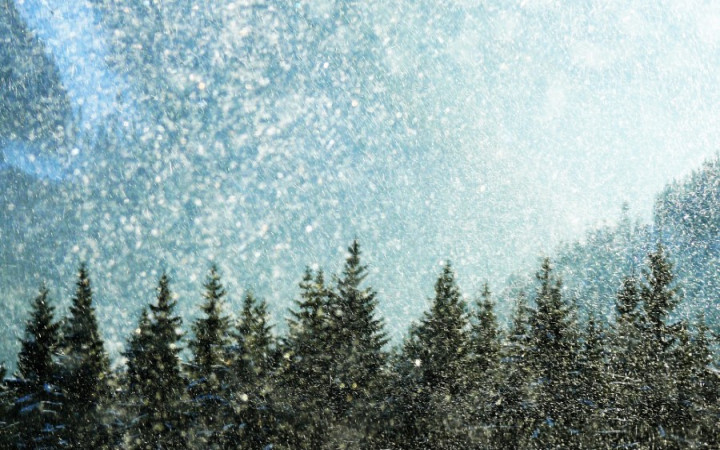Today’s Wonder of the Day was inspired by Chase from Lee's Summit, MO. Chase Wonders, “Why does it thunder when it snows? ” Thanks for WONDERing with us, Chase!
Do you get excited when the weatherman calls for snow? If you're like many kids, you might wish for several inches of snow to fall in order to earn a snow day. When you wake to see the landscape carpeted in a thick blanket of snow, you know it's going to be a good day filled with sledding and making snowmen!
As you watch the skies outside, waiting for the first snowflakes to descend from the clouds, you close your eyes to enjoy the sense of quiet and peace that usually precedes the snow. Suddenly, however, you sense a bright flash followed by a loud boom! What's going on here? It's thundersnow!
Most of the time, lightning and thunder are accompanied by rain. When we see the lightning, hear the thunder, and feel the rain, we know we're in the middle of a thunderstorm. However, in certain unique conditions, lightning and thunder can form in a storm that drops snow and hail, yielding a phenomenon meteorologists call thundersnow.
In normal thunderstorms, warm, moist air rises from Earth's surface to create tall, narrow updrafts that can approach 40,000 feet or more. These storms that drop rain usually occur when surface temperatures are above freezing.
Storms that produce snow are quite different from thunderstorms. Instead of tall, narrow updrafts, snowstorms usually form from broad layers of flat, shallow clouds that don't usually exceed 20,000 feet. Updrafts, if they exist, are usually rather mild.
Thundersnow occurs when normal snowstorm clouds begin to develop upward bumps, known as turrets. These turrets are caused by instability within the storm system, combined with a strong lifting mechanism. For example, a strong upper-level wind can bring in cold air, pushing pockets of colder air 5,000 or more feet above the rest of the flat clouds.
Turrets formed by the lifting action of cold air currents tend to be unstable, leading to the presence of both updrafts and downdrafts. These cold, unstable winds create favorable conditions for precipitation to form, including snowflakes and small hailstones known as graupel.
As precipitation particles bounce into each other, they can begin to create electrical charges. When sufficient electrical charges build up, they can be discharged in the form of cloud-to-ground or cloud-to-cloud lightning, which is subsequently followed by the rumble of thunder.
Thundersnow events can often be accompanied by significant snowfall, since the conditions that lead to thundersnow also tend to condense large amounts of snowflakes in the flat, shallow cloud layer below the turrets. Since thundersnow develops when air near the ground is below freezing, significant accumulation is possible from thundersnow.
If you've never experienced thundersnow, it's probably because the unique conditions for it to occur don't happen everywhere or very often. The instability and lifting necessary to create thundersnow has to occur in a very narrow, shallow layer between 20,000-25,000 feet up.





